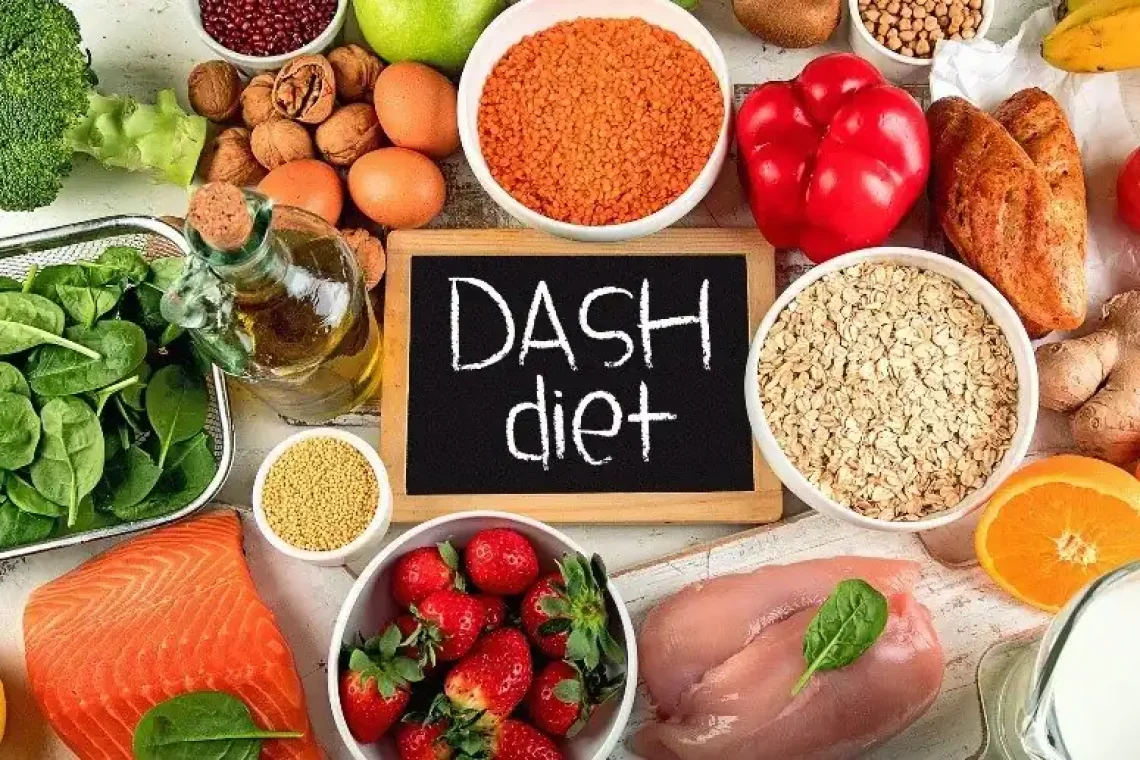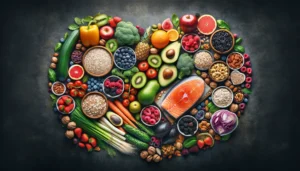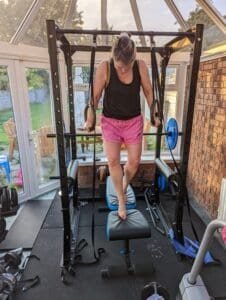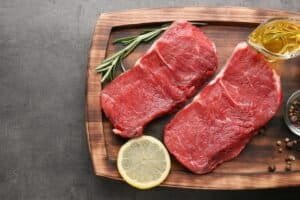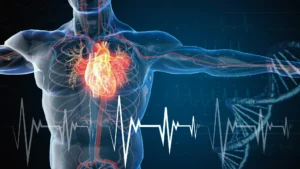Key Takeaways
- High blood pressure is one the the biggest killers. As a risk factor it is responsible for more early deaths than any other risk factor. But, people don’t fear it like they do cholesterol. And, it is silent, with most people unaware that they have high blood pressure.
- The DASH Diet (Dietary Approaches to Stop Hypertension) is scientifically proven to help lower blood pressure naturally.
- Recommended by major health organisations like the CDC, WHO, and NHS, it prioritises fruit, vegetables, wholegrains, lean proteins, and low-fat dairy while reducing salt and processed foods.
- The ‘low-fat dairy’ piece may be up for review.
- DASH is a flexible, evidence-based eating pattern that can be tailored to your lifestyle – no extremes, no calorie counting, just balance across the meals, days and week.
- It’s ideal for anyone managing high blood pressure or looking to improve their heart health. It can be used with other conditions like PCOS.
- Looking for guided support? Explore Orla’s Blood Pressure Course for expert advice, and easy wins.
Why you should care about your blood pressure levels.
High blood pressure is one the the biggest killers. As a risk factor it is responsible for more early deaths than any other risk factor. But, people don’t fear it like they do cholesterol. And, it is silent, with most people unaware that they have high blood pressure.
Ideally we would all have a blood pressure monitor at home, or at least shared with brothers, sisters, mums and dads. We would check it at home, over multiple days. Check it every morning at the same time while sitting on a chair that supports your back and your feet are resting firmly on the ground.. Your arm should be resting on a table at the same level as your heart, and you shouldn’t be talking or listening to anyone. Take 3 measurements, and get the average of the 2nd and 3rd measurement. If you do this for a week, you will have a more precise measure of your blood pressure. Extra points if you do it later in the day too. I know it sounds like hoopla, but it could save your life, or more accureately, elongate it and protect your quality of life.
Once you have the number, you need to know what it means. You want to aim for 120 over 80. If the 120 becomes 140 then your risk of a heart attack or stroke doubles.
If you have high blood pressure, I would implore you to chat to your GP about the possibility of having insuling resistance or sleep apnea. With insulin resistance your bloods may show high levels of fasting glucose or your HbA1c going above 40. You may also see high triglycerides and low HDL cholesterol levels. With sleep apnea, you may snore, may wake up in the morning feeling unrested, neep a nap during the day in a bid to enhance concentration and may have a large neck.
While you’re in with your GP, ask about potential thyroid or kidney problems, and be upfront about stress.
High blood pressure is associated with high rates of:
- Stroke
- Herat attack
- Demetia
- Early death and sudden cardiac death
- Peripheral vascular disease
- Heart failure
- AFib
- Kidney disease
High blood pressure can be the result of;
- Too much fat on the body
- Too little exercise
- Too much stress
- Too much salt
- Too little potassium
- Too much alcohol
What is the DASH Diet?
The DASH Diet stands for Dietary Approaches to Stop Hypertension – and it’s not a gimmick or restrictive fad. Developed by the National Institutes of Health (NIH) and widely recommended by the CDC and WHO, this eating pattern is built around the foods that best support blood pressure regulation. Although initially based on theory, it is now well researched and su
pported by evidence.
The DASH approach encourages whole foods naturally rich in potassium, magnesium, calcium, and fibre, while limiting sodium (salt) and ultra-processed items. There are many people who think they were new or novel about raising concern over processed food, but it’s actually something dietitians honed in on long ago. The focus is on nourishing your body rather than depriving it. If you think it overlaps with general healthy eating advice, you would be right! However, it does go a step further and gets into specific portions.
No food group is banned, and the plan can be adapted for vegetarians, busy families, or even picky eaters by your dietitian (picky eaters are now called selective eaters). It’s designed to work in the real world, not just on paper.
How the DASH Diet Helps Lower Blood Pressure Naturally
According to the CDC, nearly half of adults with high blood pressure don’t know they have it. The other half know they have it, and although stats do differ, at least half are thought to be poorly managed. Often symptomless, hypertension quietly increases your risk of stroke, heart disease, and kidney damage. It’s a bit like having high cholesterol, it’s a risk factor for heart disease, and the risk for heart disease and subsequent events grows exponentially with each additional risk factor, rather than simply having an additive or cumulative risk.
The DASH Diet helps by rebalancing the nutrients that impact blood pressure:
- Reducing salt intake
- Increasing potassium, which helps balance the impact of salt
- Boosting magnesium and calcium, essential for vascular function
- Promoting healthy weight loss and reducing cholesterol
Clinical research shows that people following the DASH Diet can reduce systolic and diastolic blood pressure in just two weeks – even without medication. This does not mean that you should stop your medication, but it is a first-line option, and works aside medications should you be taking them.
And the beauty of it? You don’t have to be perfect. Small changes – like adding a serving of veg – can lead to measurable benefits.
DASH Diet Food Groups and Serving Guidelines
The DASH Diet is structured around daily and weekly servings of various food groups. It doesn’t focus on calories or macros, but instead promotes nutrient-dense choices.
Here’s a breakdown of recommended daily servings for a ~2,000 kcal plan:
Recommended Daily and Weekly Servings
| Food Group | Servings per Day/Week | Examples |
| Wholegrains | 6–8 per day | Brown rice, oats, quinoa, potatoes, sweet potato |
| Vegetables | 4–5 per day | Broccoli, spinach, carrots, peppers |
| Fruits | 4–5 per day | Apples, oranges, bananas, berries |
| Low-fat dairy | 2–3 per day | Skimmed milk, low-fat yogurt, cottage cheese |
| Meat, poultry or fish | 2 or fewer per day | Chicken, turkey, fish, lentils, beans, tofu |
| Nuts, seeds, legumes | 1 per day | Almonds, walnuts, chickpeas, kidney beans |
| Fats & oils | 2–3 per day | Olive oil, rapeseed oil, avocado oil |
| Sweets & treats | 5 or fewer per week | Dark chocolate, homemade banana bread, fruit yoghurt |
The focus isn’t on cutting things out entirely – it’s about crowding your plate with more of what’s good for your heart.
- The carbs are for energy to feed movement and your brain. They also provide a bulk of your faily fibre.
- Vegetables provides potassium, magnesium, antioxidants and fibre, and so do fruit.
- Dairy provides calcium, phosphorus and protein.
- Meat, poultry and fish provide protein, zinc and magnesium.
- Nuts, seeds and legumes provide energy, fibre, magnesium, plant protein (mainly legumes) and unsaturated fats (mainly nuts and seeds).
Sample 1-Day DASH Diet Meal Plan
Here’s an easy-to-follow, meal plan based on DASH principles. It’s not gourmet or intimidating – just real, nutritious food.
Breakfast – Overnight oats with fruit and seeds
- ½ cup oats (60g or 2 oz)
- ½ cup milk
- ½ cup yoghurt
- 1 banana, sliced
- 1 tbsp raisins
- 1 teaspoon chia seeds
- Sprinkle of cinnamon
Oats are high in fibre and provide slow release energy. The dried fruit adds potassium, and the seeds contribute healthy fats. Cinnamon has been shown to have a surprising amount of health benefits, making it one of the most evidence-based spices.
Lunch – Wholegrain wrap with hummus and roast veg
- 1 wholewheat wrap
- 2 tablespoons hummus
- half a tin of chickpeas
- Roasted courgette, pepper, and red onion
Packed with fibre and some plant proteins, this colourful wrap delivers on both taste and heart-friendly nutrients.
Snack – Apple with yogurt and crushed walnuts
- 1 small apple
- 2 tablespoons natural yogurt
- 1 tablespoon crushed walnuts
A great mix of natural sugar, protein, and healthy fat to keep blood sugar stable and energy up. Toast the walnuts if you have time, in the air fryer or a dry pan, to improve their taste but also to help make the nutrients within the nuts more available to your body.
Dinner – Baked salmon with baby potatoes and greens
- A salmon fillet, baked with lemon and herbs
- Steamed broccoli and carrots
- 6 baby potatoes, boiled or lightly roasted in olive oil
Omega-3s from the salmon support heart health, and the veg adds potassium, fibre, and antioxidants.
Evening snack
Dark chocolate – a few chocolate chips
A large handful of berries
A few almonds
This snack offers crunch, sweet and sour as well as lots of fibre, antioxidants and is delicious.
Does Dairy Need to Be Low-Fat on the DASH Diet?
Traditionally, DASH has promoted low-fat or fat-free dairy to reduce saturated fat. That’s still a valid approach if you consume a lot of it, particularly for individuals aiming to cut calories.
However, more recent studies – including the PURE study (Prospective Urban Rural Epidemiology) – suggest that full-fat dairy (I prefer calling it ‘regular dairy’ or simply ‘dairy’), especially when unprocessed or fermented, might not be the villain it was once considered. In fact, quite the opposite, it may be the preferred choice.
The dairy matrix matters
The “dairy matrix” concept looks at how nutrients within dairy products work together rather than isolation. We don’t eat saturated fat, we eat food that contains saturated fat. For example, calcium, potassium, and bioactive peptides may offset the effects of saturated fat. And, how the saturated fat is delivered to the body, as well as the specific saturated fat it provides, is important too. Fermented dairy, like yogurt and kefir, may have even greater heart health benefits.
So, low-fat or full-fat?
- Low-fat dairy is still a great option, if you enjoy it.
- Full-fat yogurt and milk are fine just as they are and many Dietitians will recommend these options to most.
- Opting for low fat options doesn’t make a meaningful difference. I mean, you’ll be reducing your fat intake by less than 5g a day, which is nothing compared to reducing butter intake (10g per slice of toast) or opting for leaner cuts of meat (10-20g per day).
- Plus, as mentioned before, the fat in milk and yoghurt doesn’t appear to be a bad thing, on the contrary, may be good! So, let’s keep the healthier fats in our diet, and reduce what we don’t want to consume too much of.
- Cheese can fit into your diet too, particularly when part of a balanced, whole-food diet, and where there’s a natural lean towards the softer options, and lower salt varieties more often.
- The key is moderation, food quality, and dietary context – not just fat content.
How to Start the DASH Diet Without Feeling Overwhelmed
Start slow. You don’t need a complete kitchen overhaul or a strict meal plan from day one. Focus on adding, not subtracting. You took how many years to build up the habits you’re in now, you can’t change overnight, so aim to build new habits slowly, accept that it will (and should) take time. Being patient in your approach facilitates sustainable change.
Easy entry points:
- Add one extra portion of veg a day.
- Switch from white to wholemeal bread, or processed carbs to more wholegrain varieties.
- Choose fresh or frozen ingredients over processed options.
- Reduce salt gradually – your taste buds will adjust.
- Batch cook DASH-friendly meals for busy weeks.
It’s not about perfection – it’s about creating habits that are realistic and long-lasting.
Take Charge of Your Blood Pressure – With Expert Support
If you’re looking to improve your heart health or manage your blood pressure naturally, Orla Walsh’s Blood Pressure Course is an ideal next step.
It’s designed by Orla, a registered dietitian, to give you:
- Proven strategies based on the latest science
- Flexible guidance you can personalise to your life
Instead of Googling conflicting advice, get clear, practical steps that work. Alternatively, book in with one of the team for an individual assessment and dietary advice, or else a body composition analysis (body fat percentage etc…).
FAQs About the DASH Diet
What is the DASH Diet and how does it work?
The DASH Diet, or Dietary Approaches to Stop Hypertension, is a proven eating pattern that lowers blood pressure and supports heart health. It emphasises fruit, vegetables, wholegrains, lean proteins, and dairy while reducing salt and processed foods.
Can the DASH Diet lower blood pressure without medication?
Yes. Studies show that the DASH Diet can reduce systolic blood pressure by up to 14 mm Hg (but certainly 3 mmHg). Some people achieve significant results within two weeks, others take more time. Always check with your GP before making changes to your medication or treatment plan.
Is the DASH Diet good for cholesterol and heart health?
Yes. It promotes soluble fibre, healthy fats, and low levels of saturated and trans fats. These features help lower LDL cholesterol and improve overall cardiovascular risk.
Do I have to avoid salt completely?
No, but the goal is to reduce your intake. Most people eat far more salt than they realise, particularly from processed foods. Men tend to eat twice what they require! Cooking at home, using herbs and spices, and choosing lower-sodium (salt) products can make a big difference.
Can I follow the DASH Diet if I have diabetes?
Absolutely. The DASH Diet includes complex carbohydrates and fibre-rich foods that help with blood sugar control. It’s commonly recommended for people managing both high blood pressure and type 2 diabetes. However, your carbohydrate intake may need to be tailored carefully to your activity levels and blood sugar control.
Is full-fat dairy allowed on the DASH Diet?
Yes. While older guidelines recommend low-fat dairy, new research supports the inclusion of moderate amounts of full-fat, especially fermented dairy. Consume mainly plain yogurt and milk, but by all means include some cheese too but keep portions sensible.
Is the DASH Diet good for weight loss?
Yes, indirectly. While it’s not a weight loss plan, the focus on whole foods, fibre, and low-sugar options often leads to natural, gradual weight loss.
How do I start the DASH Diet without feeling overwhelmed?
Start with one small change – like adding a fruit at breakfast or cutting back on added salt. Gradually build up. Orla’s Blood Pressure Course offers structured support to help you implement changes sustainably.
Can children or teens follow the DASH Diet?
Yes. The DASH Diet promotes balanced nutrition suitable for all ages. For young children, make sure fat intake isn’t too restricted, as it’s essential for growth. And it’s often best not to discuss weight or body size with kids, keep the focus on health and what the body can do.
How long does it take to see results on the DASH Diet?
Most people see improvements in blood pressure within two weeks, especially if following it consistently. Long-term benefits include better cholesterol levels and reduced heart disease risk.

